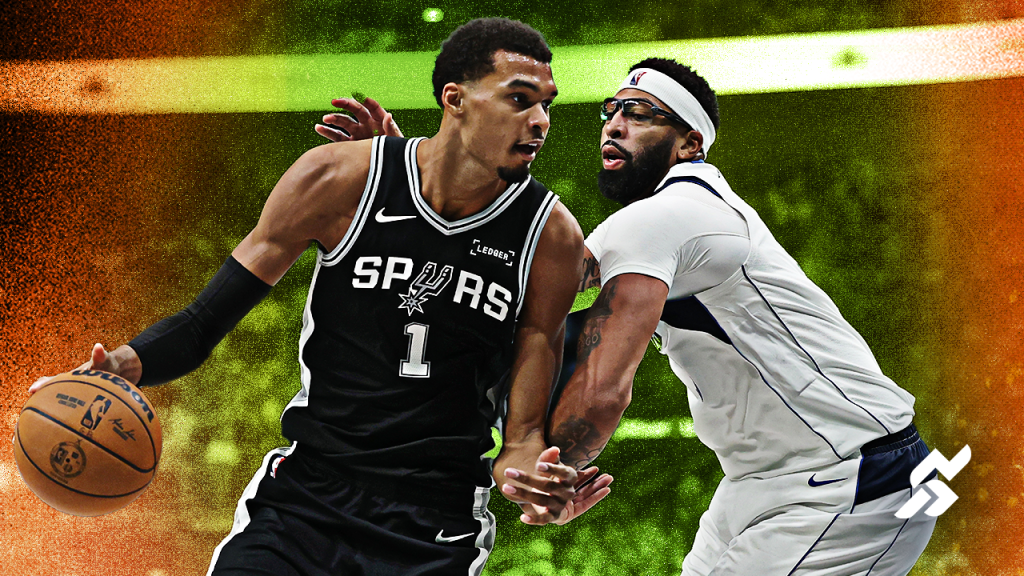NBC couldn’t miss during its first NBA broadcast since 2002.
NBA fans welcomed the voice of Mike Tirico, now synonymous with Super Bowls and Olympic Games, alongside Jamal Crawford and Reggie Miller for the league’s 2025-26 tipoff game Tuesday. Viewers complimented NBC’s camera quality and new graphics. An intro montage featuring NBA stars past and present garnered more than 5 million views online, separate from a halftime sit-down with Michael Jordan that generated its own digital waves.
Now comes the hard part.
NBC will broadcast games every Tuesday night, plus Sunday nights beginning in February. Peacock will have its own exclusive action on Monday. Tirico, MJ, the on-site pregame crew and A-tier production outfit won’t always be there. But the broadcaster will still need to convince fans that the games are worth tuning into.
Sports television is being split in two right now. The growing divide doesn’t separate streaming and linear—in fact, those two distribution approaches increasingly mirror each other. Instead, it’s between what’s served via those channels: must-watch events, and everything else, AKA background entertainment or “ambient sports.”
The NBA’s tip-off night fit into that first category. ESPN’s addition of the Inside the NBA quartet gave fans an extra reason to tune back in for night two, and Amazon Prime Video wooed audiences to its Friday night debut with the introduction of a high-tech studio and its own slate of commentating talent. But future contests risk slipping into box No. 2.
“Ambient denotes something that you don’t have to pay attention to in order to enjoy but which is still seductive enough to be compelling if you choose to do so momentarily,” New Yorker writer Kyle Chayka said in 2020, writing about all-too-digestible streaming television shows like Emily in Paris. But he could have just as easily been describing a Monday night Wizards at Pistons game (Nov. 10, Peacock) or many other NBA contests that don’t involve a given fan’s favorite team or all of that squad’s marquee stars.
TV sets are ceding their position as primary entertainment devices to the screens in our hands, accepting a background role instead. At the same time, live sports are no longer scarce. You can watch something in real-time 24/7. We’re in the middle of nearly 50 straight nights with FBS or NFL football. And once football’s gone, the NBA will be on every night of the week for those with the right combination of streaming services. In that kind of world, how special can a single game be?
Netflix has been the clearest in its hunt for sports event programming. It wants standalone NFL games on Christmas, the first game of the MLB season and the Home Run Derby more than what might come in between. On the other end of the spectrum, the platform just acquired distribution rights for a raft of Ringer podcasts, increasing the chances sports fans throw on Netflix rather than YouTube when looking for sports chatter without having to shell out for more exclusive game rights.
Netflix’s approach is informed by its experience in movies, where a big event is the coin of the realm. A unique experience that must be consumed now is what it takes to break out in a world of infinite entertainment options—in theaters or at home.
And sports have responded by forming their schedules around events. After the excitement of Opening Week, the NBA pivots to NBA Cup Play. Then Christmas Day, the All-Star Game, and before you know it the Play-In Tournament and Playoffs, which all three broadcasters will split.
NASCAR is currently re-evaluating its own schedule and playoff format, trying to determine just how many of its races can be standalone draws and how to maximize the significance of the rest. The NFL, blessed with the physical drama at its game’s core, has found a way to make most national matchups must-see TV, if not for reasons of typical fandom then for fantasy football or gambling implications. Its RedZone programming creates a seven-hour beast of an event out of some dozen or so games that individually might not move the needle.
There’s nothing inherently wrong with presenting an ambient experience. Baseball broadcasts thrive as the background sound of summer. I’ve fallen in love with professional cycling in large part because its hours-long races airing in the mornings here offer a compelling alternative to a black screen and silence.
But NBC wants the NBA to be much more than that. It’s paying $27 billion to boost the value of its broadcast network, deliver audience attention to advertisers and drive people to subscribe to Peacock. All of that is a harder sell if fans are accustomed to watching only intermittently.
Ultimately, it’s up to the athletes to deliver events worth our time. The Houston Rockets and Oklahoma City Thunder lived up to Tuesday’s hype with a double overtime affair that garnered 5.9 million average viewers, the most for an NBA opening night game played in October since LeBron James’ Miami Heat debut in 2010. A night later, Victor Wembanyama delivered a 40-point, 15-rebound showcase for those wise enough to lock into his game against the Dallas Mavericks. ESPN’s 2.5 million average viewers for that game was up 63% from a year prior, part of its third-most watched NBA opening Wednesday ever.
A lot of sporting contests can be enjoyed ambiently these days. Wemby is worth planning around.

